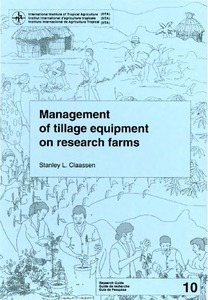| dc.identifier.citation | Jagtap, S., Mornu, M. & Kang, B. (1993). Simulations of growth, development and yield of maize in the transition zone of Nigeria. Agricultural Systems, 41(2), 215-229. |
| dc.description.abstract | The IBSNAT (Internal Benchmark Sites Network for Agrotechnology Transfer) CERES-Maize model, which stimulates a sole crop of maize, was tested during the 1990 and 1991 growing seasons at Ibadan in southwestern Nigeria. The maize model is designed to simulate plant physiological processes (nutrient and water uptake, transpiration, photosynthesis, organogenesis and biomass partitioning), and predict growth, development and yield in daily time steps in a manner similar to the processes as they are thought to occur in the real plant. An adequately tested and validated crop model with known genetic constants for varieties could be a time and money saving tool, useful for studying response of varieties in constrasting environments and management practices. Information on phenology, leafweight stem weight, above ground biomass, grain yield and leaf area index was collected approximately every 10 days. Daily weather data were collected using an automatic station located within the field. Genetic constants, i.e. growing degree days (base 8°C) from seedling emergence to the end of juvenile phase (P1), degree days (base 8°C) from silking to maturity (P5) potential number of grains per plant (G2) and potential grain growth rate during the linear filling stage (G3), were estimated using observed silking and maturity dates, grains per plant and weight per grain at harvest for each replication, using 1990 data. P1 and P5 were estimated to be 280 and 680 degree days across all replications; G2 was 647, 654 and 612 with a mean of 637·66 grains per plant; similarly, G3 was 9·2, 9·13 and 8·06 with a mean of 8·79 mg/day. The mean values of genetic constants were used for simulation of 1990 and 1991 growing seasons. No other adjustments were made in the model. Simulation of grain yield, weight per grain, grains per m2 (for 1991), leaf area index, stover weight and above ground biomass (for both 1990 and 1991) were predicted within 10% of the field observed data. |

